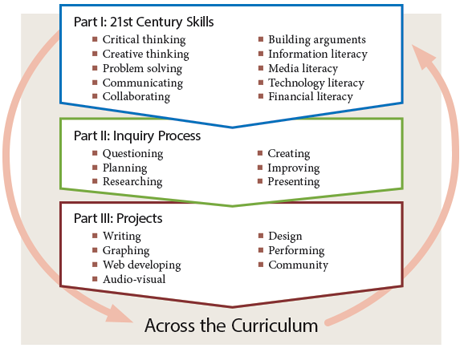Web site: Partnership for 21st Century Skills
21st Century Skills in Context
The best way to practice critical thinking is to have something to think critically about, and the best way to practice creative thinking is to create something. You’ll get plenty of practice with these and the other 21st century skills in Part I of this handbook. These skills are then used in every step of the inquiry process (Part II), which in turn is used in every project in Part III. The following graphic shows how all of this important information fits together for a dynamic learning experience. 
Life Skills
In addition to the learning and literacy skills we’ve discussed so far, the Partnership for 21st Century Skills lists life skills that everyone needs to succeed. Using the inquiry process to complete a project is a natural training ground for developing life skills:
- Flexibility and adaptability
- Initiative and self-direction
- Social and cross-cultural skills
- Productivity and accountability
- Leadership and responsibility
Your Turn Which of the 21st century skills is your strongest right now? Which do you most need to improve? How will improving this skill help you in school and in the workplace?
